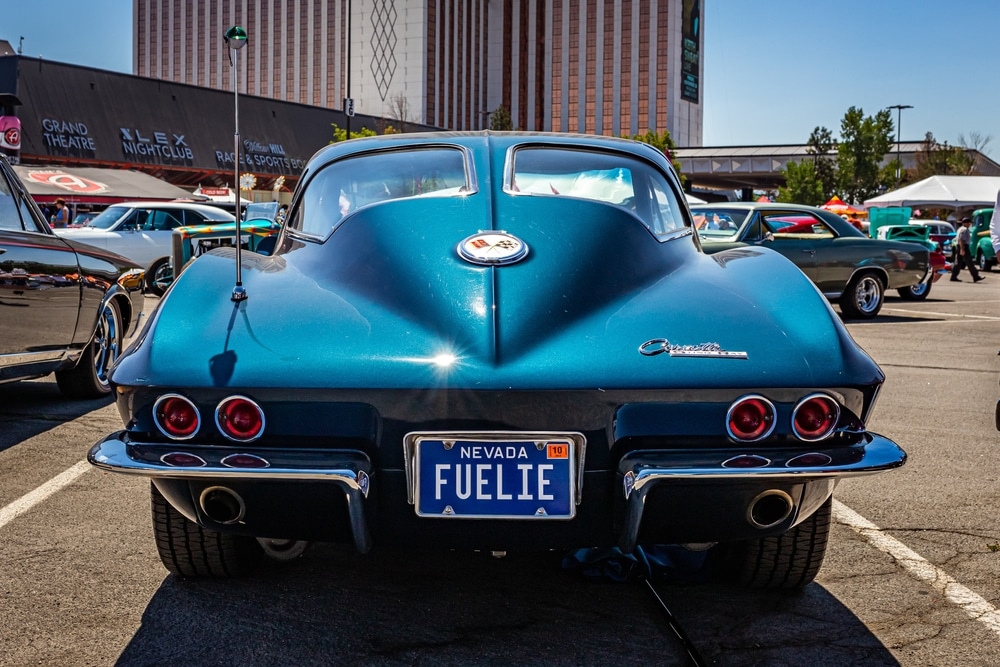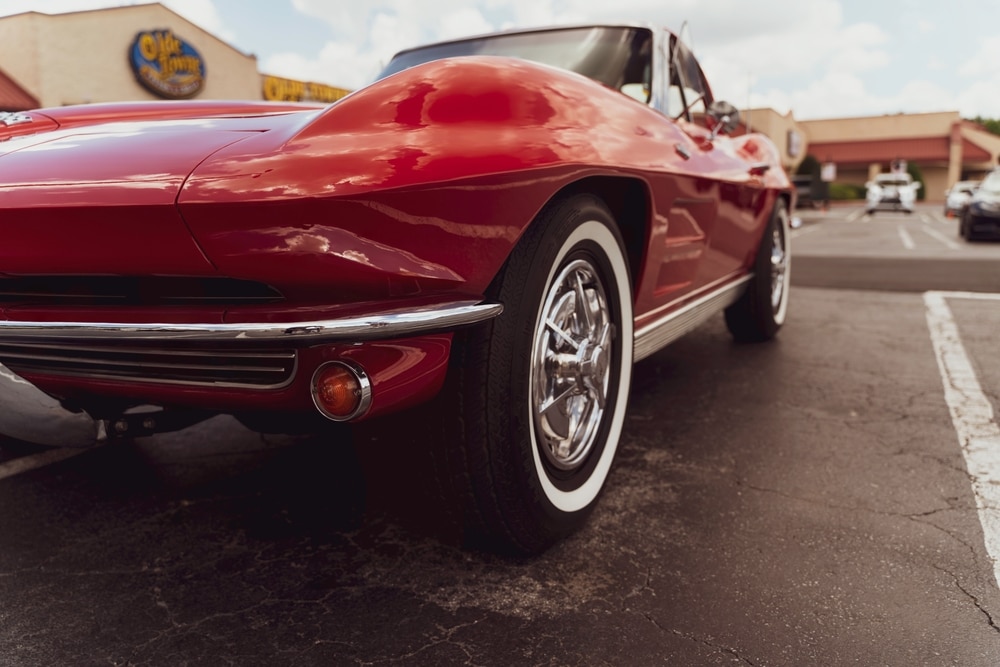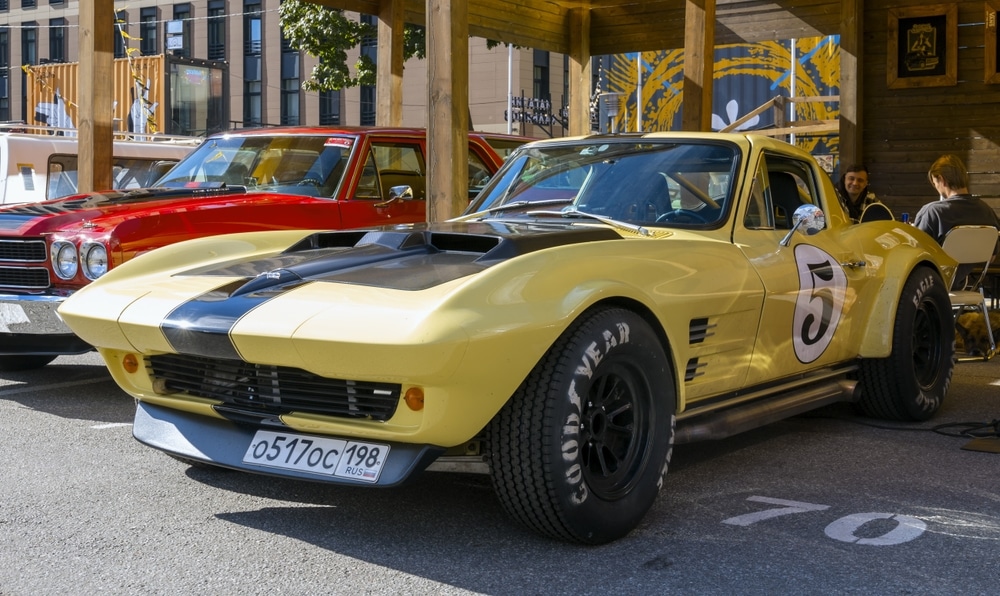When it comes to the Chevy 350 engine, understanding the firing order and HEI distributor is crucial for optimal performance.
The firing order for a Chevy 350 with an HEI distributor is 1-8-4-3-6-5-7-2, moving clockwise around the cap. This sequence ensures each cylinder fires at the right moment, keeping your engine running smoothly.

You might be wondering why this matters. Well, picture your engine as a well-orchestrated symphony. Each cylinder is an instrument, and the HEI distributor is the conductor. Get the timing wrong, and you’ll have a cacophony instead of a harmonious roar.
The HEI distributor plays a vital role in delivering the spark to each plug in the correct order, making sure your Chevy 350 purrs like a kitten or growls like a lion – whichever you prefer!
Key Takeaways
- The Chevy 350 HEI distributor firing order is 1-8-4-3-6-5-7-2
- Correct firing order ensures optimal engine performance and efficiency
- Understanding your HEI distributor can help with troubleshooting and maintenance
Anatomy of the HEI Distributor
You might think an HEI distributor is just a fancy hat for your engine, but it’s the heart of your Chevy 350’s ignition system. Let’s take a peek under that cap and see what makes this bad boy tick.
Understanding the Distributor Cap
The distributor cap is like the conductor of your engine’s orchestra. It’s got a bunch of terminals arranged in a circle, each corresponding to a cylinder. You’ll notice these terminals are arranged in a specific order to match your engine’s firing sequence.
Inside the cap, you’ll find a carbon button that makes contact with the rotor. This little guy helps transfer the high voltage from the rotor to the spark plug wires. It’s like a miniature power station!
Don’t forget to check your cap for cracks or carbon tracks. These can cause misfires, and nobody wants their Chevy sounding like it’s got the hiccups.
The Role of the Rotor
The rotor is the unsung hero of your distributor. It’s that funny-looking plastic piece that spins inside the cap. As it rotates, it distributes the spark to each terminal in turn.
You’ll notice one end of the rotor has a metal tip. This tip conducts electricity from the center of the distributor cap to each spark plug wire terminal. It’s like a tiny lightning rod, zapping each cylinder in the right order.
Remember, a worn rotor can cause misfires or even leave you stranded. So, give it some love during your next tune-up.
Ignition Coil Insights
In an HEI system, the ignition coil is built right into the distributor. It’s like having a power plant in your backyard! This coil takes the low voltage from your battery and turns it into the high voltage needed to fire your spark plugs.
The coil is that cylindrical thing sticking out of the top of your distributor. It’s filled with wire windings that create a magnetic field when electricity flows through them. When the flow is interrupted, it creates a high voltage spike.
This spike travels down to the rotor, through the distributor cap, and finally to your spark plugs. It’s like a game of electrical hot potato, but way more useful!
Remember, a failing coil can cause all sorts of starting and running issues. If your Chevy’s acting up, don’t forget to check this crucial component.
Demystifying the Chevy 350 Firing Order

The Chevy 350’s firing order is crucial for optimal engine performance and fuel economy. Let’s break down this mysterious sequence and see how it impacts your trusty small block.
Why Firing Order Matters
You might think the firing order is just a random sequence, but it’s far from it. It’s like choreographing a dance for your pistons. Get it wrong, and your engine will shake like a washing machine full of rocks.
The correct firing order ensures smooth operation, reduces vibration, and helps your Chevy 350 purr like a contented kitten. It’s not just about comfort, though. A proper firing order improves fuel efficiency and engine longevity.
Think of it as giving each cylinder its moment in the spotlight. When timed correctly, it’s a beautiful performance that’ll have you grinning every time you hit the gas.
Navigating Through 1-8-4-3-6-5-7-2
Now, let’s decode that cryptic sequence: 1-8-4-3-6-5-7-2. It’s not the combination to your high school locker, but it might as well be the key to your Chevy’s heart.
This order tells you which cylinder fires when. Cylinder 1 kicks off the party, followed by 8, then 4, and so on. It’s like a conga line of explosions under your hood.
Remember, your distributor cap is like a clock face. The first plug wire sits at the 5 o’clock position, and the distributor spins counterclockwise. It’s a bit like playing “Pin the Tail on the Donkey,” but with spark plugs and a lot more horsepower at stake.
Tuning In: Timing and Performance

Getting your Chevy 350’s HEI distributor firing on all cylinders is like conducting a symphony. You’ll need to master the timing and vacuum advance to unleash your engine’s full potential.
Setting the Timing Right
First things first, you’ll want to find top dead center (TDC) on the compression stroke. It’s like finding the sweet spot on your favorite recliner – crucial for comfort and performance.
Grab your timing light and aim for an initial timing between 12-18 degrees. If you’re below 10, you might need to pull that distributor and do some tinkering.
Remember, timing is everything. Too early, and you’ll hear that engine knock like an angry neighbor. Too late, and you’ll lose power faster than a teenager’s phone battery.
Pro tip: Make sure you’re on the compression stroke, not exhaust. You don’t want to be the mechanic who can’t tell the difference between a push and a pull!
Vacuum Advance Essentials
Now, let’s talk vacuum advance. It’s like your engine’s personal trainer, adjusting timing on the fly for peak performance.
Set it up right, and you’ll feel the difference in torque and horsepower. It’s like giving your Chevy a double shot of espresso.
You’ll want to check that vacuum cannister isn’t playing bumper cars with your intake manifold. A little wiggle room goes a long way.
Remember, a well-tuned vacuum advance can improve fuel economy too. Your wallet will thank you at the pump.
Don’t forget to listen to your engine. If it’s running smoother than a buttered biscuit, you’re on the right track. If not, time to break out the wrenches and try again!
High-Energy Ignition (HEI) System Overview
Buckle up, gearheads! We’re about to dive into the world of High-Energy Ignition (HEI) systems. This powerhouse of spark delivery revolutionized how your Chevy 350 fires up and keeps roaring down the highway.
What Sets HEI Apart?
Ever wonder why your buddy’s old Chevy purrs like a kitten while yours sputters like a wet cat? The secret might be in the distributor. The HEI distributor is a one-stop shop for ignition greatness.
It’s like having a miniature power plant under your hood. The HEI packs the coil, module, and distributor all in one tidy package. No more juggling separate components or playing wire spaghetti under the hood.
Your spark plugs will thank you too. The HEI system delivers a hotter, more consistent spark that’ll wake up even the sleepiest of cylinders.
Benefits of HEI Systems
Now, let’s talk perks. Your Chevy 350 with an HEI system is like giving your engine a shot of espresso. You’ll notice improved starting, especially on those frosty mornings when your old points system would’ve left you stranded.
Forget about constantly adjusting points – the HEI is practically maintenance-free. Just change your spark plugs when needed and you’re golden.
Fuel economy? Yep, it might improve a tad. The more efficient burn means you’re squeezing more miles out of every drop of gas. And let’s not forget about performance – your engine will run smoother and might even pack a bit more punch.
Plus, with only one wire to connect, installation is a breeze. You’ll be back on the road faster than you can say “High-Energy Ignition”!
Comparative Insights
Buckle up, gear heads! We’re about to rev up our knowledge on HEI distributors and firing orders across different Chevy engines. You’ll see how these bad boys stack up against each other.
Small-Block vs. Big-Block
You might think bigger is always better, but when it comes to Chevy engines, it’s not that simple. Your trusty small-block Chevy rocks that classic 1-8-4-3-6-5-7-2 firing order. It’s like a well-choreographed dance routine.
Now, let’s talk about the big boy on the block – the Chevy 454. This beast follows the same firing order, but with a bit more oomph. You’ll feel the difference in your seat when you hit the gas.
Both engines love their HEI distributors. It’s like giving your engine a shot of espresso – instant performance boost!
HEI in Different Engine Types
Your V8 engine and HEI distributor are like peanut butter and jelly – they just work. But what about other engine types? Well, let’s spill the beans.
LS engines? They’ve got a different dance routine. These modern marvels use a 1-8-7-2-6-5-4-3 firing order. It’s like they’re doing the cha-cha while the old school V8s are still doing the waltz.
Cylinder numbers matter too. Your HEI cap needs to know which wire goes where. It’s like a game of musical chairs, but get it wrong, and your engine won’t be making sweet music.
Remember, whether you’re cruising in a small-block or a big-block, your HEI distributor is there to keep the rhythm. It’s the unsung hero of your engine’s rock band!
Frequently Asked Questions
Setting up the firing order on a Chevy 350 with an HEI distributor can be tricky. Let’s dive into some common questions to help you get it right and keep your engine purring like a kitten.
What’s the trick to setting the firing order on a Chevy 350 with an HEI distributor?
The key is remembering the magic numbers: 1-8-4-3-6-5-7-2. That’s your firing order for a 350 Chevy small block. Start at the number one cylinder and work your way around the cap following this sequence.
Remember, clockwise is your friend here. The rotor turns clockwise, so make sure you’re wiring it up in that direction.
Can you walk me through finding the number one position on a distributor cap for a Chevy 350?
First, you’ll want to remove the number one spark plug. Now, put your finger over that spark plug hole and slowly turn the engine. When you feel air pressure, you’re at the compression stroke.
Take a peek at the timing indicator on your timing chain cover. If the rotor’s pointing to the number one terminal on the cap, you’ve hit the jackpot!
What’s the scoop on the correct HEI distributor wiring for a Chevy 350?
Your HEI distributor needs juice to work its magic. You’ll want to connect the positive terminal to a 12-volt source that’s hot when the key is on. The negative terminal goes to ground.
Don’t forget about that all-important tach wire. It usually connects to the “TACH” terminal on the distributor.
How do I determine the firing sequence when looking at an HEI distributor cap for my small block Chevy?
Start at the number one position and count clockwise. Remember our magic numbers: 1-8-4-3-6-5-7-2. Each terminal corresponds to a cylinder in this order.
It’s like a dance. Once you’ve got the rhythm down, you’ll be waltzing through distributor setups in no time.
Got any tips for identifying the number one terminal on an HEI distributor for an old 350?
Look for a small mark or notch on the distributor cap. This usually indicates the number one position. No mark? No problem. The number one wire is typically the one closest to the firewall.
When in doubt, follow the plug wire from the number one cylinder. It’ll lead you right to the promised land.
Is there a foolproof method to ensure the distributor firing order is correct on my SBC 350?
Double-check is the name of the game. First, make sure your distributor is fully seated and the rotor is aligned with the number one position.
Then, trace each wire from the distributor to its corresponding spark plug. If they match our magic sequence (1-8-4-3-6-5-7-2), you’re golden.
